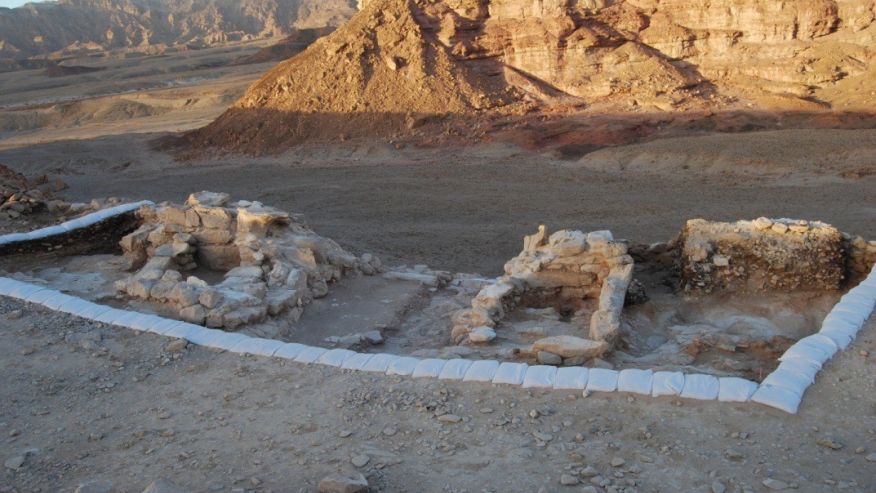 TIMNA VALLEY, Israel – Archaeologists have discovered a 3,000-year-old military fortification in Israel that dates to the reign of King Solomon and provides evidence that the biblical king ruled over an advanced, wealthy kingdom.
TIMNA VALLEY, Israel – Archaeologists have discovered a 3,000-year-old military fortification in Israel that dates to the reign of King Solomon and provides evidence that the biblical king ruled over an advanced, wealthy kingdom.
Writing in “The Journal of Archaeological Science: Reports,” a team of researchers from Tel Aviv University describe recent findings from Israel’s Timna Valley, which is located in far southern Israel. Thanks to its exceptionally dry climate, many ancient structures and artifacts dating to Bible times have been exquisitely preserved there.
The Tel Aviv University researchers were particularly interested in the remains of a gatehouse from the 10th century B.C. that was associated with copper ore mines.
“The results of excavations in the gatehouse complex of one of the largest smelting camps in Timna Valley provide various new insights on the early Iron Age (10th c. BCE) copper production system and the society behind it,” the researchers wrote in their journal article. “The two-room gatehouse was a prominent landmark and used for defense and deterrence, indicating a period of instability and military threats.”
The “astonishing preservation” of the gatehouse gives archaeologists a unique window into the culture and customs of a “sophisticated ancient society,” a statement from Tel Aviv University said. Livestock pens, a variety of seeds and grains, animal bone fragments, and other artifacts and materials were also unearthed at the site.
“While there is no explicit description of ‘King Solomon’s mines’ in the Old Testament, there are references to military conflicts between Israel and the Edomites in the Arava Valley,” said Dr. Erez Ben-Yosef, one of the leaders of the Timna Valley research team.
Rich in copper ore, the Timna Valley has long been the site of extensive mining operations. To date, over 10,000 mining shafts have been found in the area.
“An advanced military fortification—a well-defined gatehouse complex—unearthed recently at Timna, including donkey stables, points to the community’s highly-organized defense system and significant dependence on long-distance trade,” the university’s statement announced.
Although the Bible never mentions mines in the times of King Solomon, it does describe his extraordinary wealth.
“Now the weight of gold that came to Solomon in one year was six hundred threescore and six talents of gold,” 1 Kings 10 states. “Beside that he had of the merchantmen, and of the traffick of the spice merchants, and of all the kings of Arabia, and of the governors of the country.”
Archaeology continues to confirm and bring to life the Bible’s historical accounts, Ben-Yosef commented.
“According to the Bible, David traveled hundreds of miles outside of Jerusalem and engaged in military conflict in the desert—striking down ‘18,000 Edomites in the Valley of Salt,’” Ben-Yosef said. “Now, having found evidence of defensive measures—a sophisticated fortification—we understand what must have been at stake for him in this remote region: copper.”
“The historical accuracy of the Old Testament accounts is debated, but archaeology can no longer be used to contradict them,” he added. “On the contrary, our new discoveries are in complete accordance with the description of military conflicts against a hierarchical and centralized society located south of the Dead Sea.”
Become a Christian News Network Supporter...


